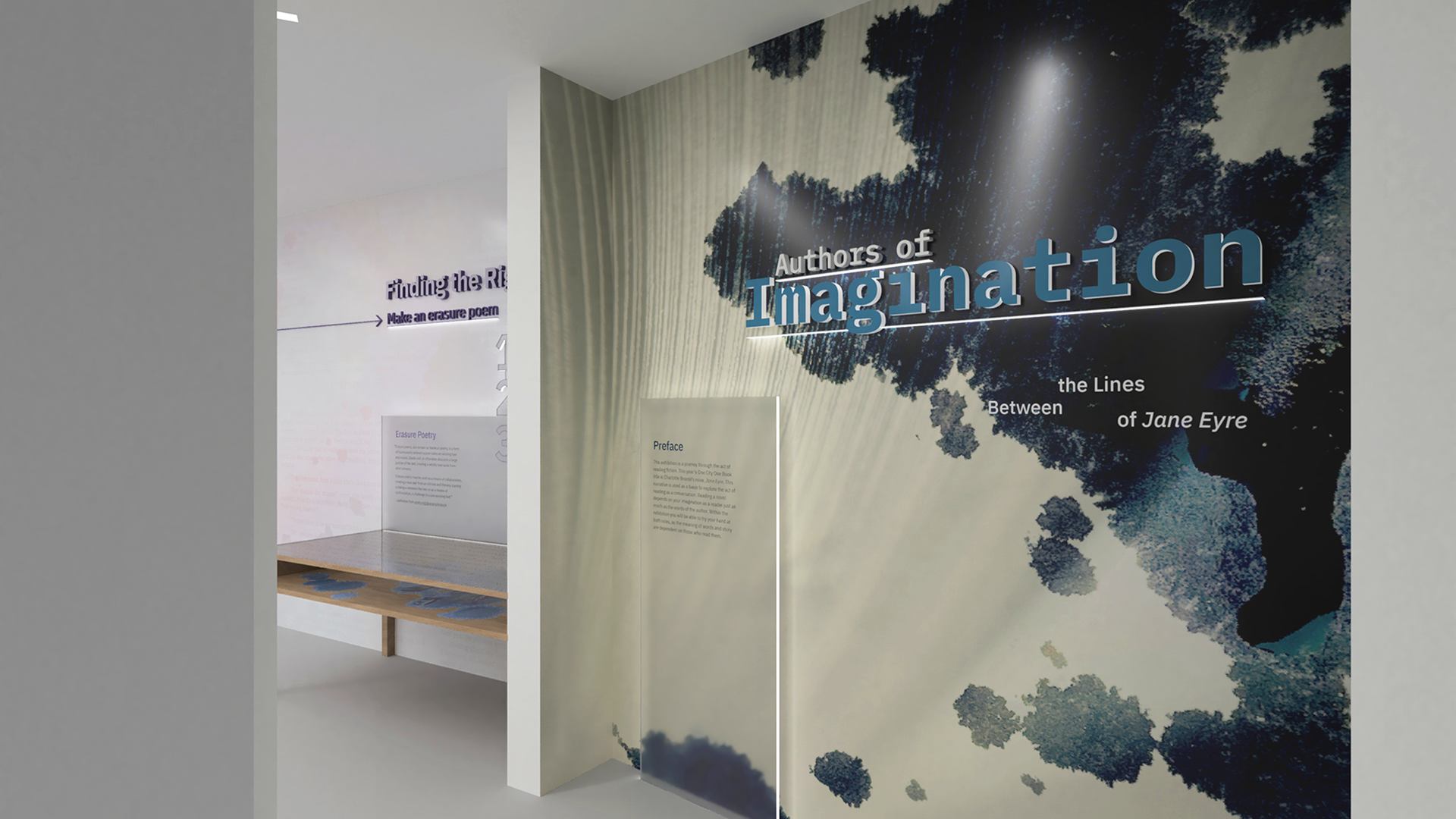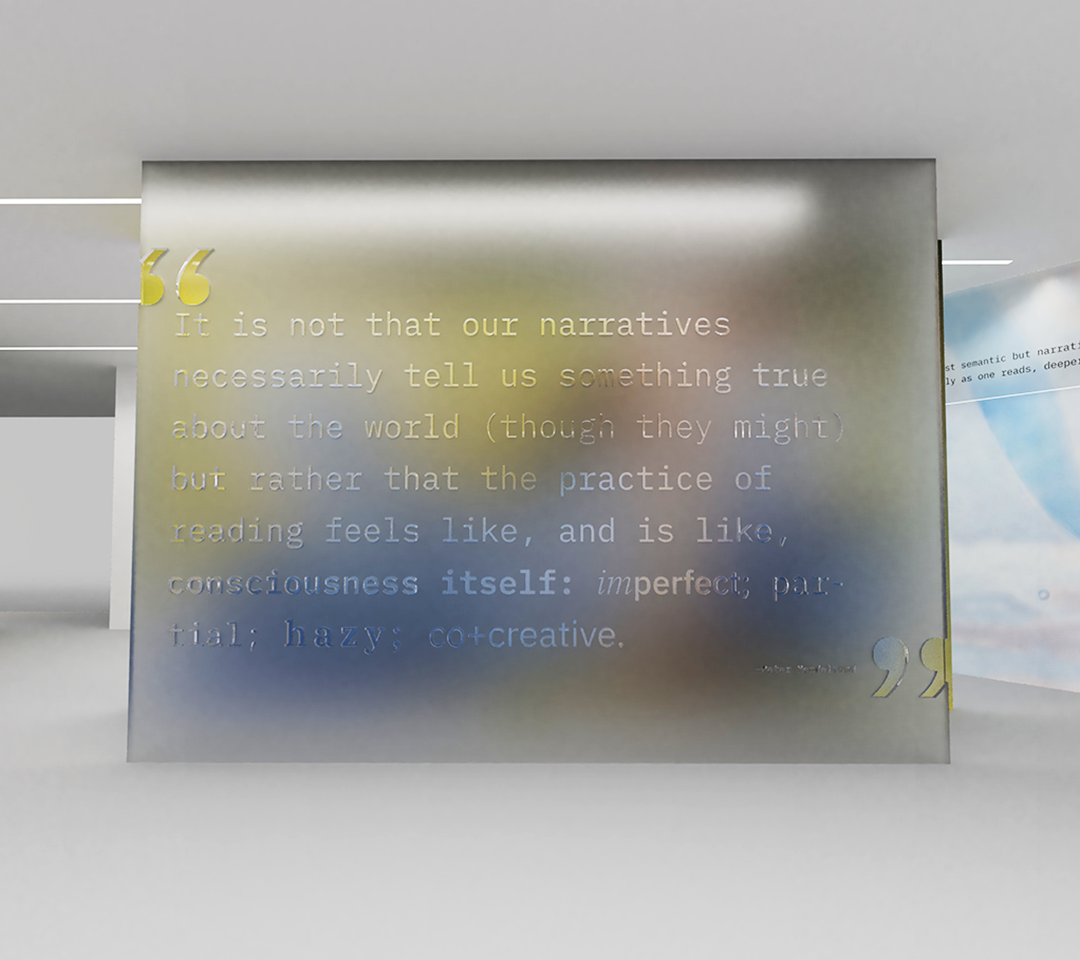
Sydney Spruiell

Abstract
Reading is participating. Within the chapters of a narrative lie experiences, conversations, and understanding. Each reader’s version of the story varies based on their own life experiences. It is exactly this uncontrollable variability that makes the world of literature so infinite. The subjectivity of language as well as the relationship between writers and readers can inform how we think about and approach communication. Stories influence us just as much as we influence them. Words, phrases, and narratives do not exist in a stagnant form, but rather morph and iterate in meaning from person to person. In Peter Mendelsund’s book, What We See When We Read, he writes that “Authors are curators of experience.” In order to shed light on this experience, I will design a space where participants can recognize what reading literature means to them. I will highlight a specific story and go beyond the author’s words to show how readers interpret those words. By exploring the act of reading fiction in an interactive exhibition, participants will be able to discover their own subconscious creativity. Visitors will therefore gain a new understanding of how reading fiction augments their own imaginations.
Thesis Advisors
Earl Gee: SJSU Graphic Design Professor
Diane Lee: SJSU Graphic Design Assistant Professor
Nicholas Taylor: SJSU English and Comparative Literature Professor
Research Questions
1. What makes the writer/reader relationship special?
2. How does the story influence the reader? How does the reader influence the story in return?
3. What does a reader see when they read? How can this be applied to images and design?




Outcome
The resulting exhibition uses content from two source texts to present an interactive story. Charlotte Brontë’s novel Jane Eyre provides a narrative foundation. Peter Mendelsund’s book What We See When We Read creates an additional layer of context through which participants can interpret what they read and how they are reading it. The exhibition is made up of seven main interactions, ranging from the creation of an erasure poem to drawing a visual response to a quote. Designing activities for the sharing of interpretations was not only a method to add interest to the exhibition, but to explore and even prove the overall claim. It is not so much about what the words say, but the meaning we find in them. Novels have the amazing ability to unlock our imaginations in ways we could never anticipate. Every reader brings something unique to the pages of the book they choose open. Similarly, every participant would be able to contribute something new to the exhibition experience. This project helps participants to recognize and appreciate their own creative ability, because in many ways reading is creating.